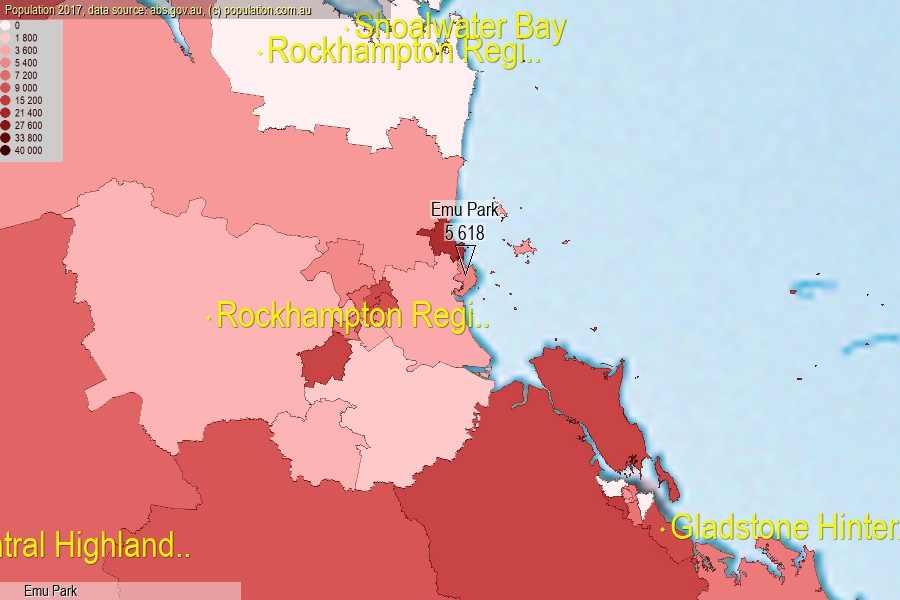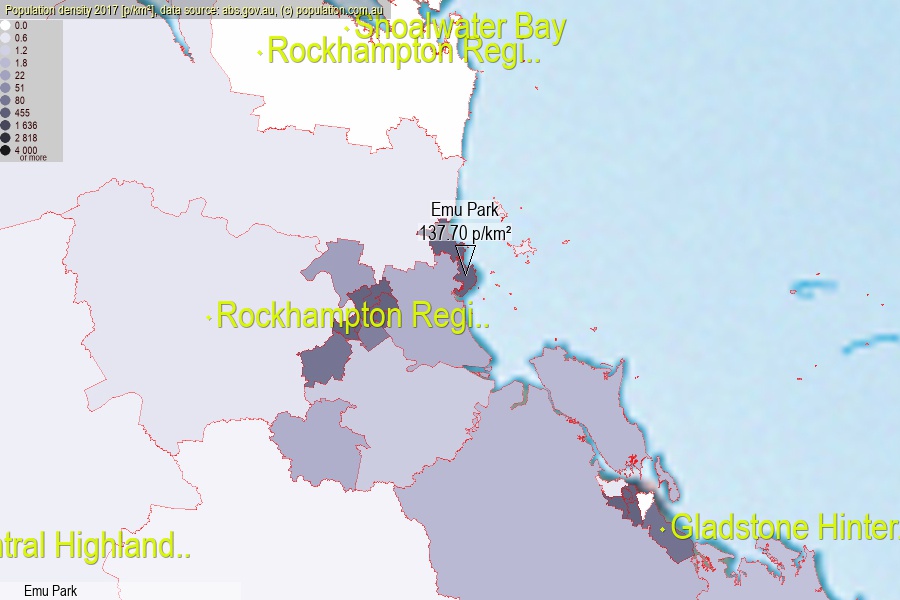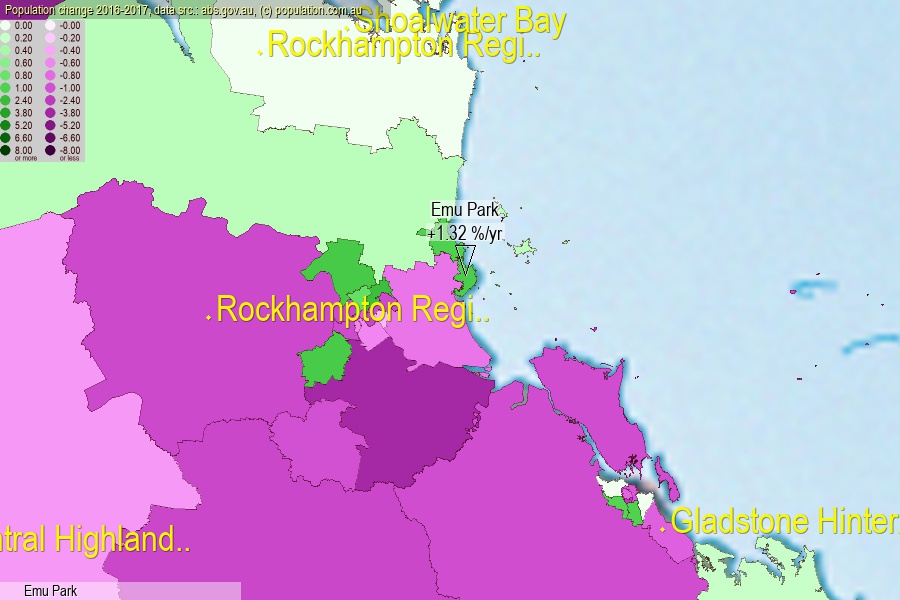 population.com.au
population.com.auLast official estimated population of Emu Park (as Statistical Area Level 2) was 5 618 people (on 2017-06-30)[2]. This was 0.02% of total Australian population and 0.113% of QLD population. Area of Emu Park is 40.80 km², in this year population density was 137.70 p/km² . If population growth rate would be same as in period 2016-2017 (+1.32%/yr), Emu Park population in 2025 would be 6 238. [0]



Click to enlarge. Emu Park is located in the center of the images.
Population [people], population density [p./km²] and population change [%/year] [2]
View borders » (new window) [4]
[1991-1992] +3.59 %/Yr.
[1992-1993] +7.40 %/Yr.
[1993-1994] +5.23 %/Yr.
[1994-1995] +3.23 %/Yr.
[1995-1996] +3.69 %/Yr.
[1996-1997] +8.51 %/Yr.
[1997-1998] +7.06 %/Yr.
[1998-1999] +5.43 %/Yr.
[1999-2000] +1.90 %/Yr.
[2000-2001] +5.24 %/Yr.
[2001-2002] +1.83 %/Yr.
[2002-2003] +3.91 %/Yr.
[2003-2004] +2.42 %/Yr.
[2004-2005] +2.77 %/Yr.
[2005-2006] +1.80 %/Yr.
[2006-2007] +4.03 %/Yr.
[2007-2008] +4.22 %/Yr.
[2008-2009] +4.91 %/Yr.
[2009-2010] +2.47 %/Yr.
[2010-2011] +3.92 %/Yr.
[2011-2012] +4.53 %/Yr.
[2012-2013] +4.72 %/Yr.
[2013-2014] +3.55 %/Yr.
[2014-2015] +2.27 %/Yr.
[2015-2016] +2.63 %/Yr.
[2016-2017] +1.32 %/Yr.
[0] Calculated with linear interpolation from officially estimated population
[1] Read more about SA2 and Australian Statistical Geography Standard (ASGS) on abs.gov.au
[2] Population data from Australian Bureau of Statistics (Population and density: 2017; change: 2016-2017)
[3] Digital Boundaries: Australian Statistical Geography Standard (ASGS) 2016.
[4] Border coordinates are simplifyed using Ramer-Douglas-Peucker algorithm.